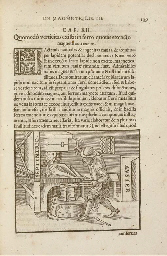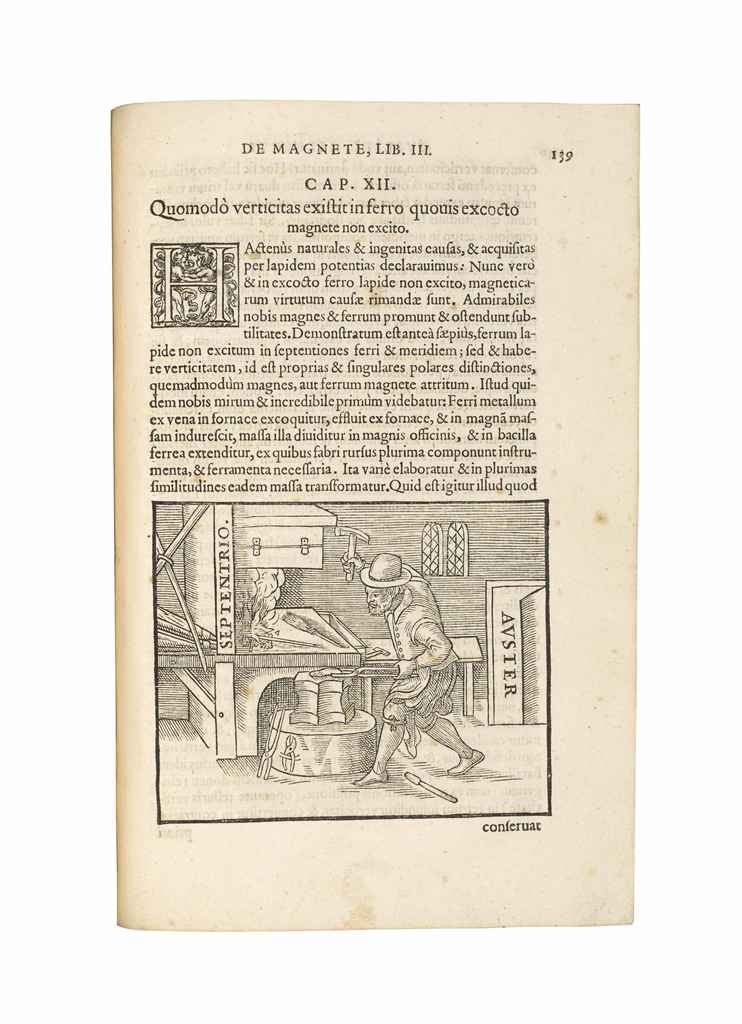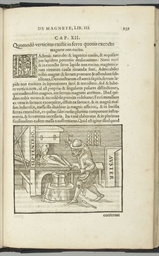GILBERT, William (1544-1603). De magnete, magneticisque corporibus, et de magno magnete tellure; Physiologia nova, plurimis & argumentis, & experimentis demonstrata . London: Peter Short, 1600. 2 o (273 x 188 mm). Woodcut caduceus device (McKerrow 119) on title-page, large woodcut arms on verso, numerous text woodcuts, some full-page, large folding woodcut diagram, woodcut historiated initials, head- and tailpieces. (A few insignificant foxmarks.) Contemporary limp vellum, manuscript title along spine, later ribbon ties; modern quarter morocco slipcase. Provenance : Charles Lumisden: deleted ownership inscription on title-page ("Carolus Lumisden, 13 VIIbr. 1607) -- other early inscriptions on title-page and front flyleaf -- Louis H. Silver: bookplate; gift to -- The Newberry Library: duplicate sale, Sotheby's London, 8 November 1965, lot 133 -- Marvin Carton, Sotheby's New York, 2 February 1985, lot 53. FIRST EDITION. A VERY FINE, CRISP COPY. Gilbert became the most distinguished scientist in England during the reign of Elizabeth I. His main work, De magnete , is "the first major English scientific treatise based on experimental methods of research. Gilbert was chiefly concerned with magnetism; but as a digression he discusses in his second book the attractive effect of amber (electrum), and thus may be regarded as the founder of electrical science. He coined the terms 'electricity,' 'electric force' and 'electric attraction'" (PMM). Book one "introduced his new basic idea... that the earth is a gigantic lodestone and thus has magnetic properties" and book two, with its observations on the amber effect, "introduced the vocabulary of electrics, and is the basis for Gilbert's place in the history of electricity" (DSB). His experiments concluded that a compass needle points north-south and dips downward due to the earth's magnetic force. Dibner Heralds of Science 54; Grolier/Horblit 41; J. L. Heilbron, Electricity in the 17th and 18th centuries (Berkeley, 1979), pp. 169-179; Norman 905; PMM 107; STC 11883; Wellcome 2830.
GILBERT, William (1544-1603). De magnete, magneticisque corporibus, et de magno magnete tellure; Physiologia nova, plurimis & argumentis, & experimentis demonstrata . London: Peter Short, 1600. 2 o (273 x 188 mm). Woodcut caduceus device (McKerrow 119) on title-page, large woodcut arms on verso, numerous text woodcuts, some full-page, large folding woodcut diagram, woodcut historiated initials, head- and tailpieces. (A few insignificant foxmarks.) Contemporary limp vellum, manuscript title along spine, later ribbon ties; modern quarter morocco slipcase. Provenance : Charles Lumisden: deleted ownership inscription on title-page ("Carolus Lumisden, 13 VIIbr. 1607) -- other early inscriptions on title-page and front flyleaf -- Louis H. Silver: bookplate; gift to -- The Newberry Library: duplicate sale, Sotheby's London, 8 November 1965, lot 133 -- Marvin Carton, Sotheby's New York, 2 February 1985, lot 53. FIRST EDITION. A VERY FINE, CRISP COPY. Gilbert became the most distinguished scientist in England during the reign of Elizabeth I. His main work, De magnete , is "the first major English scientific treatise based on experimental methods of research. Gilbert was chiefly concerned with magnetism; but as a digression he discusses in his second book the attractive effect of amber (electrum), and thus may be regarded as the founder of electrical science. He coined the terms 'electricity,' 'electric force' and 'electric attraction'" (PMM). Book one "introduced his new basic idea... that the earth is a gigantic lodestone and thus has magnetic properties" and book two, with its observations on the amber effect, "introduced the vocabulary of electrics, and is the basis for Gilbert's place in the history of electricity" (DSB). His experiments concluded that a compass needle points north-south and dips downward due to the earth's magnetic force. Dibner Heralds of Science 54; Grolier/Horblit 41; J. L. Heilbron, Electricity in the 17th and 18th centuries (Berkeley, 1979), pp. 169-179; Norman 905; PMM 107; STC 11883; Wellcome 2830.





.jpg)



.jpg)
.jpg?height=400)


.jpg)
Testen Sie LotSearch und seine Premium-Features 7 Tage - ohne Kosten!
Lassen Sie sich automatisch über neue Objekte in kommenden Auktionen benachrichtigen.
Suchauftrag anlegen